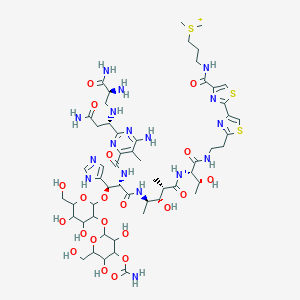Malignant effusions
Adult: 60,000 IU in 100 mL NaCl 0.9% instilled into the affected serous cavity, may be repeated up to a lifetime cumulative dose of 360,000 IU, as necessary.
Elderly: Total dose: 60-69 years 200,000-300,000 IU (30,000-60,000 IU weekly); 70-79 years 150,000-200,000 IU (30,000 IU weekly); ≥80 years 100,000 IU (15,000 IU weekly).
Elderly: Total dose: 60-69 years 200,000-300,000 IU (30,000-60,000 IU weekly); 70-79 years 150,000-200,000 IU (30,000 IU weekly); ≥80 years 100,000 IU (15,000 IU weekly).
Intramuscular
Lymphoma
Adult: 15,000 IU once or twice weekly, up to a total dose of 225,000 IU. Max lifetime cumulative dose: 360,000 IU.
Elderly: Total dose: 60-69 years 200,000-300,000 IU (30,000-60,000 IU weekly); 70-79 years 150,000-200,000 IU (30,000 IU weekly); ≥80 years 100,000 IU (15,000 IU weekly).
Elderly: Total dose: 60-69 years 200,000-300,000 IU (30,000-60,000 IU weekly); 70-79 years 150,000-200,000 IU (30,000 IU weekly); ≥80 years 100,000 IU (15,000 IU weekly).
Parenteral
Squamous cell or testicular tumours
Adult: 15,000 IU 3 times weekly or 30,000 IU twice weekly via IM/IV inj, repeated at intervals of 3-4 weeks up to a lifetime cumulative dose of 360,000 IU. Dose is adjusted according to tolerance. Alternatively, may be given via IV infusion at a rate of 15,000 IU/24 hours for up to 10 days or 30,000 units/24 hours for up to 5 days.
Elderly: Total dose: 60-69 years 200,000-300,000 IU (30,000-60,000 IU weekly); 70-79 years 150,000-200,000 IU (30,000 IU weekly); ≥80 years 100,000 IU (15,000 IU weekly).
Elderly: Total dose: 60-69 years 200,000-300,000 IU (30,000-60,000 IU weekly); 70-79 years 150,000-200,000 IU (30,000 IU weekly); ≥80 years 100,000 IU (15,000 IU weekly).




 Sign Out
Sign Out




